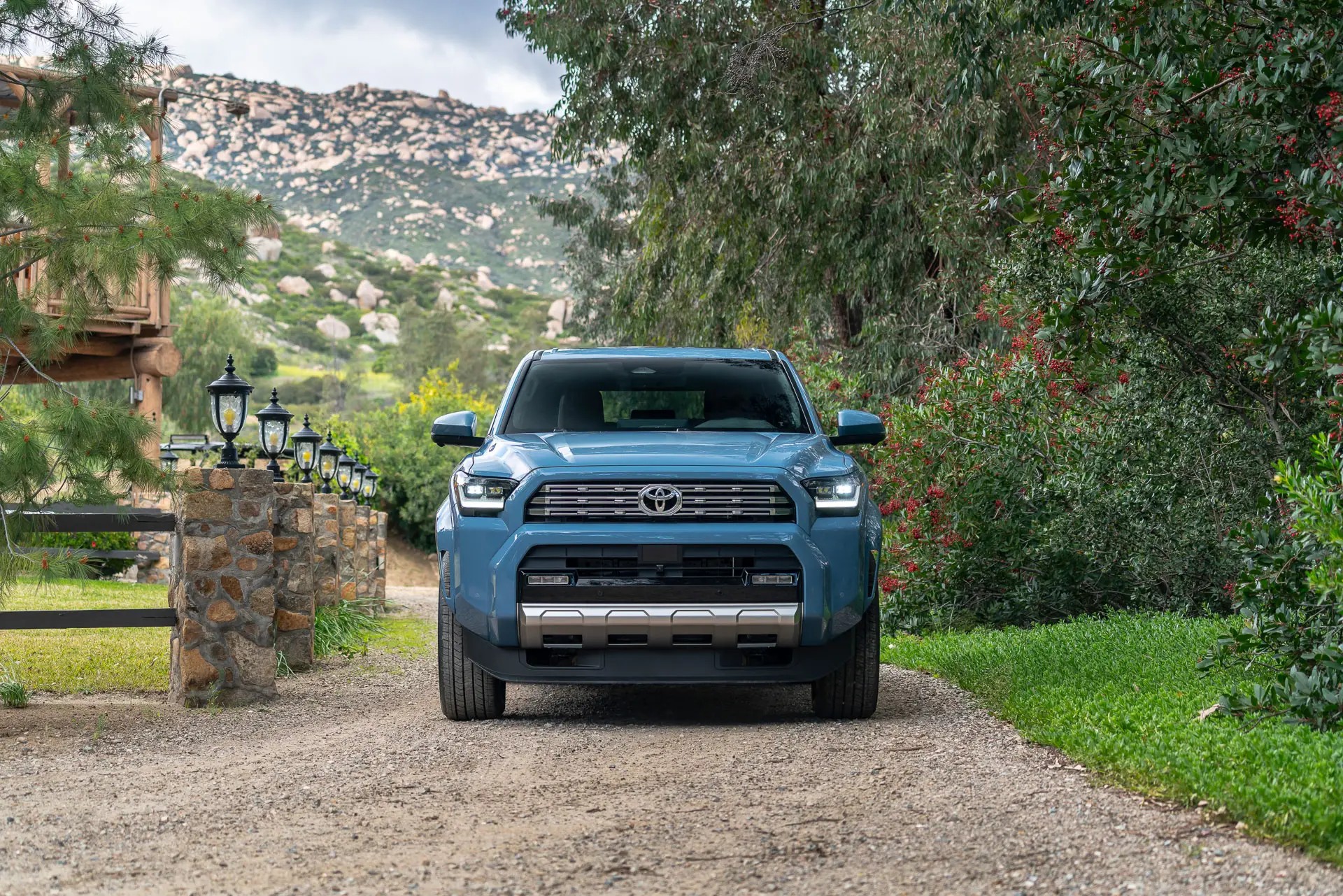After a staggering 15 years, Toyota has finally unleashed the all-new, sixth-generation 4Runner. This highly anticipated redesign is already making waves, and not all of them are positive. In fact, the 2025 4Runner is proving to be one of the most talked-about and yes, controversial new vehicles of the year. We recently acquired a 4Runner ourselves to dive deep into the changes and address the burning question: are the critics right to question this new iteration of the iconic SUV?
Our team recently purchased a 2025 Toyota 4Runner TRD Off-Road from a dealership in Riverside, California. Since then, we’ve put it through its paces, taking it on adventures alongside the equally debated 250 Series Land Cruiser in Moab and pushing its limits on the challenging Ike Gauntlet. Our initial impressions and experiences with this new model have been gathered, and it’s clear this vehicle is a cornerstone of Toyota’s lineup. The outgoing fifth generation consistently achieved impressive sales figures, often exceeding 100,000 units annually since 2016, highlighting the 4Runner’s enduring appeal. But does this new 4runner Redesign live up to the legacy?
Why the Skepticism Around the 6th Gen 4Runner?
The primary source of contention surrounding this 4Runner redesign boils down to what’s under the hood. Toyota has replaced the venerable and widely praised 4.0-liter naturally aspirated V6 engine with a 2.4-liter turbocharged four-cylinder.
The 1GR-FE V6, a workhorse that powered the 4Runner for 22 years since 2002, is no more. Its reputation for reliability and longevity is legendary, with many owners vowing to keep their fifth-gen models running indefinitely. However, it’s crucial to examine this powertrain change with a balanced perspective. The older engine, while dependable, was undeniably slow. This sluggishness was apparent even at lower altitudes, exacerbated by the outdated 5-speed automatic transmission. Factor in higher elevations, off-road modifications like lift kits and larger tires, and the performance became even more underwhelming, accompanied by poor fuel economy. Personal experiences often revealed fuel consumption figures barely reaching 17-18 mpg, even with conservative driving, especially in off-road trims like the TRD Off-Road or TRD Pro.
The new 4Runner redesign aims to address these shortcomings. The introduction of forced induction and a modern 8-speed automatic transmission promises to push average fuel economy into the 20s. The turbocharged engine itself delivers 278 horsepower and 317 lb-ft of torque. Furthermore, a hybrid powertrain option is available, boosting output to an impressive 326 horsepower and a substantial 465 lb-ft of torque. These figures represent a significant power increase compared to the outgoing V6, despite its reliability. While the hybrid’s fuel economy advantage in a large SUV like the 4Runner might be less dramatic, the performance gains are undeniable. Admittedly, the four-cylinder engine note might not be as appealing as some would hope, but the V6 wasn’t exactly known for its sonorous soundtrack either.
Beyond the Engine: Design, Interior, and Price of the Redesigned 4Runner
The engine debate is just one aspect of the “skepticism” surrounding the 4Runner redesign. The new powertrain’s long-term reliability is still to be fully determined, although this engine family has been utilized in other Toyota and Lexus vehicles for several years, accumulating significant real-world mileage without widespread major issues. This contrasts with some isolated concerns with Toyota’s larger 3.5-liter twin-turbo V6.
Overall, the 2025 Toyota 4Runner represents a significant departure from its predecessor. This comprehensive redesign offers a distinctly modern SUV experience, diverging from the more evolutionary updates seen between previous generations. The fourth-generation 4Runner, for instance, shared powertrain similarities and a comparable overall feel with the early fifth-generation models.
This new 6th gen 4Runner now shares the TNGA-F platform with Toyota’s latest trucks and SUVs. Stylistically, it aligns more closely with the new Tacoma pickup, whereas previous 4Runner generations had stronger visual links to the global Land Cruiser Prado and Hilux models. This design shift could be a deciding factor for potential buyers, depending on their affinity for the new Tacoma’s aesthetics. Inside, the 4Runner redesign brings notable improvements in material quality, technology integration, and overall ergonomics, resulting in a more comfortable and advanced cabin compared to the older model.
However, this comprehensive modernization comes at a cost – literally. While a four-cylinder 4Runner might be more palatable at a lower price point, the reality is different. The base 4Runner SR5 starts at $42,220, and even at this level, some desirable features like a larger infotainment screen are omitted, subtly reminding owners of the available upgrades. Stepping up to a trim like the TRD Off-Road Premium, as we tested, pushes the price to a considerable $58,318 – and that’s without the hybrid powertrain.
While the base price remains relatively close to the outgoing model, higher trims quickly escalate into more expensive territory. Despite the enhanced daily usability and improvements in this 4Runner redesign, it reflects the broader trend of rising vehicle prices in 2025, a situation unlikely to improve in the near future.
For a more in-depth analysis and driving impressions, you can watch Tommy’s detailed video review of the new 4Runner and our ongoing ownership experience.
